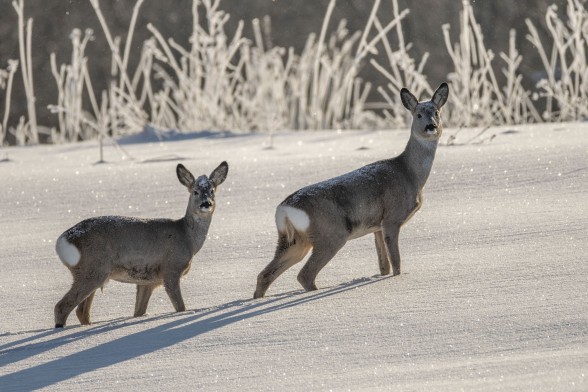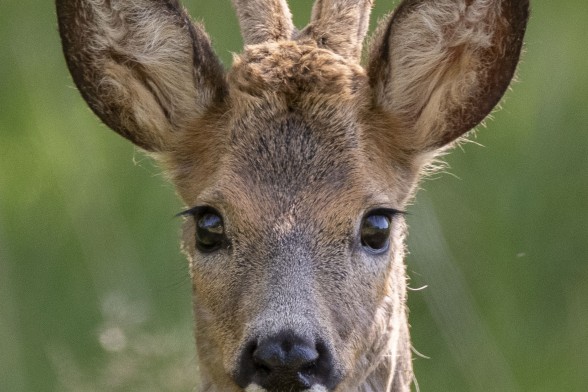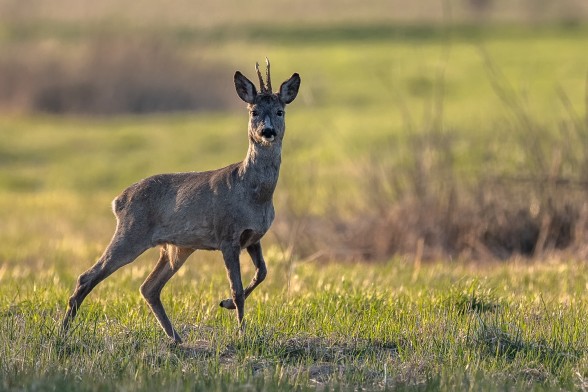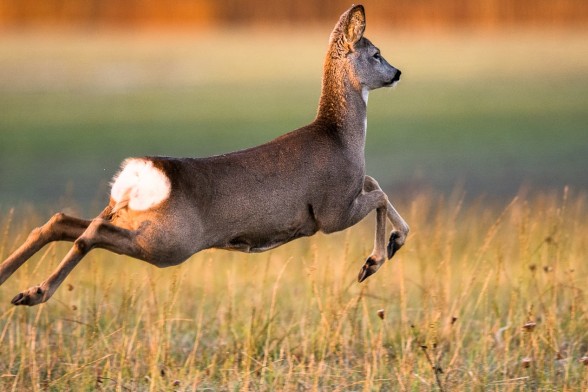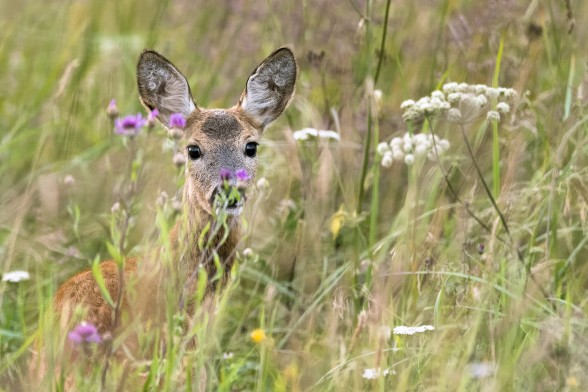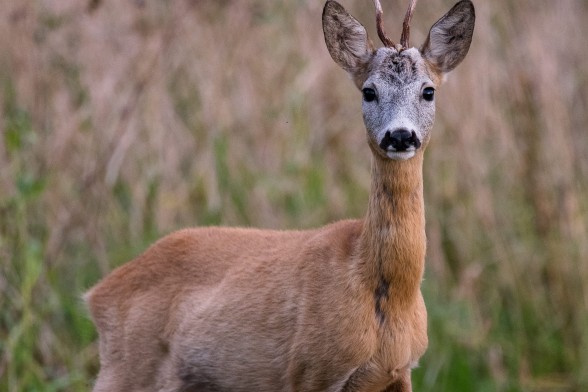
Roe deer
Diet
Roe deer is an herbivore. In summer, roe deer graze meadows, clearings and fields adjacent to forests. In autumn, it forages in forests where small shrubs or mints are abundant. In winter, when the snow cover exceeds 30 cm and mints are no longer available, it moves to forests with a rich undergrowth of shrubs. More than 250 plant species are recorded as food for the roe deer. It feeds on grasses, mints, twigs and leaves of trees and shrubs. It consumes 2-3 kg of food per day. It feeds mainly on succulent plants, young grass, leaves and berries. Roe deer will not generally venture into a field that has had or has livestock in it.
Habitat
The roe deer inhabits woodlands, clearings, small woods, groves and scrub. One of the most common species in a variety of woodland-scrub habitats interspersed with grassland and meadows. Currently also often found in suburban areas in Latgale.
Important and interesting facts
The roe deer is one of the smallest members of the deer family. The colour of the body changes seasonally: it is brown in summer and greyer in winter. Around the very short tail (2-3 cm) is a white spot, which roe deer use to signal in times of danger. The sex of the doe can be determined from the white spot: females are heart-shaped and males are kidney-shaped. Male roes are called bucks, females are does.
Only male bucks have antlers.
If a doe is frightened, it roars like a dog and jumps high.
Information sources: latvijasdaba.lv, Wikipedia
Photos: Māris Kreicbergs
